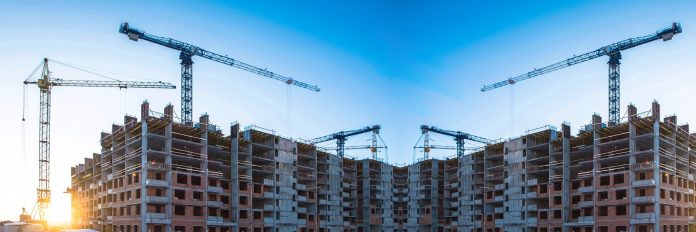Construction is poised to undergo many exciting changes over the next ten years. The construction industry, while keeping up with innovations in technology, is ready to meet the new challenges happening in the market. Market conditions are constantly changing, with some difficulties presented on the supply side and in terms of labor. Howard Wilner, an industry expert, explores the trends which are reshaping the industry today and into the future.
1. Technology Integration
The construction industry has not adopted new technologies with the speed of other sectors of the economy. The nuts and bolts of construction work have not changed in years and are typically aided exclusively by power tools. The management side of construction has undergone many changes over the past several years, including the rise of construction project management software. This software enables project managers to fully plan their work while dealing with the challenges that arise during construction. Scheduling, time management, and project management can all help a construction site run smoothly.
In addition to new software, construction companies are making increased use of drones. Drone photography helps project managers understand exactly what is happening at the job site, and it can also point out places where safety is in question.
2. Environmental Concerns
Green technology is a new and growing trend in the construction industry. Green construction means planning a project with an eye to environmental sensitivity from start to finish. This can incorporate planning and design, as well as construction activities. Green methods can be used to maintain the buildings, and then to demolish them when their usage has been outlived.
Construction is responsible for approximately 20 percent of greenhouse gas emissions around the world. Therefore, it is imperative that construction companies begin reducing their environmental footprint. Building green projects also includes making the buildings last longer through sturdier construction methods. This reduces the amount of waste produced.
Green construction materials are under development as well. These construction materials use waste products like cigarette butts.
3. Increasing Cost of Materials
The increase in material costs is an ongoing trend which will continue to affect the construction industry. Prices have steadily been on the rise, with a 2 to 3 percent gain from 2018 into 2019.
One of the most important problems facing the construction industry is the rise in material costs due to increasing tariffs. Particularly between China and the United States, prices have risen sharply. Construction firms will need to pass these increases on to their clients or risk taking sustained losses during trade uncertainty. This could have the effect of suppressing growth in the construction industry.
Import tariffs are leading to more construction materials being produced in the United States. This should have a delayed beneficial impact on the industry, with American-made products producing more economic growth than imported components.
4. Smaller Labor Force
The historically low unemployment rates and lack of skilled labor mean that there have been fewer available construction workers. While the number of projects remains high, the labor force remains small. This hampers the construction of new buildings and raises costs for everyone, since the more experienced workers require higher pay.
The construction industry needs to be proactive in encouraging new workers to join the industry. Better compensation, benefits, and safety provisions will go a long way toward encouraging inexperienced workers to consider construction as a career.
5. Modular Construction
This trend has made an impact in the residential sector, but it is becoming more important in the commercial sector as well. Modular buildings are able to be produced more cheaply and with fewer labor costs than traditional projects. When construction companies choose modular construction, they can customize the parts to fit the new building or repeat the use of common modules.
The height of modular buildings is increasing as the square footage of each project has risen. Some construction companies would only build five-story buildings using modular technology, but modular construction can now go as high as 18 stories. This presents a cost savings while at the same time increasing the square footage which can be built in a project.
6. Increased Safety
Finally, the construction industry has incorporated many new technologies which increase worker safety. Tracking workers using Bluetooth and Wi-Fi enables construction managers to detect whether a fall has occurred. Robotics have begun to supplement jobs previously done by human employees, leading to safer lifting and fewer injuries.
Construction Changes
These exciting trends will help construction retain its place as one of the most important American industries. With technological and green advancements, construction will continue to be a sustainable industry. Howard Wilner encourages all construction companies to look into using these new methods of doing business.
Find a Home-Based Business to Start-Up >>> Hundreds of Business Listings.

















































